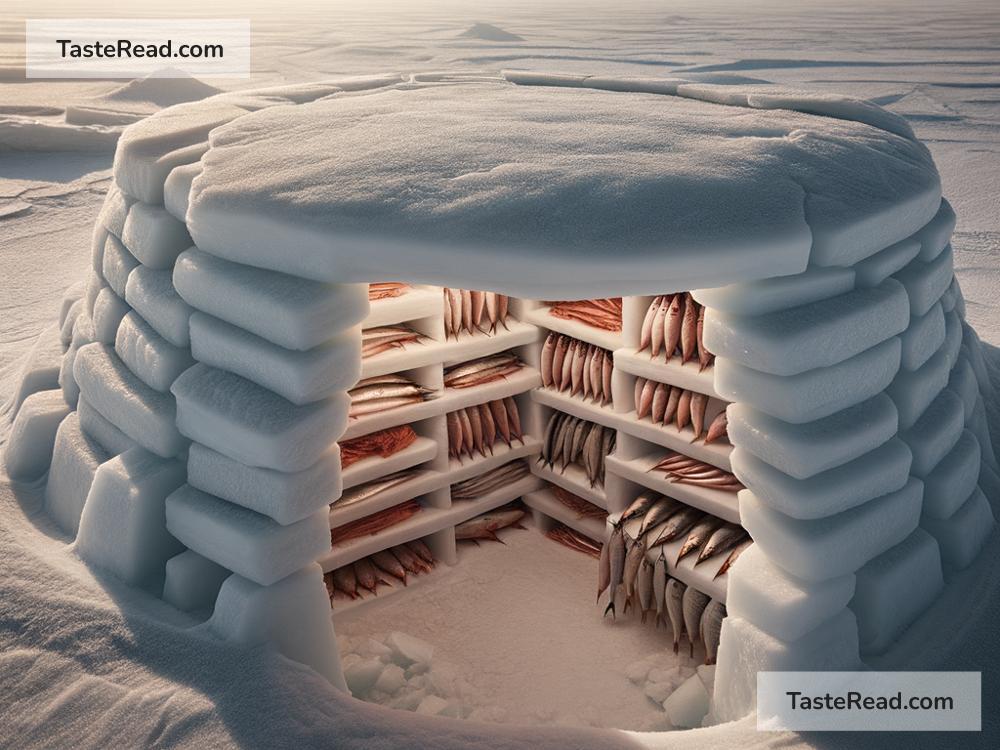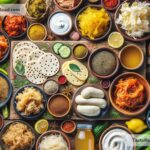Unique Food Preservation Techniques Used by Inuit Communities
The Inuit people are indigenous to the Arctic regions of Alaska, Canada, and Greenland. Living in one of the coldest and harshest environments on Earth, they developed unique ways to preserve food. Their creative techniques not only helped them survive but also ensured their food was safe and nutritious throughout the year. Many of these methods have been passed down through generations and are still admired for their ingenuity.
In this blog, we’ll explore some of the fascinating food preservation methods used by Inuit communities.
The Arctic Environment: Nature’s Refrigerator
Before we dive into the specific techniques, it’s important to understand that the Arctic itself plays a huge role in preserving food. Temperatures often remain below freezing for most of the year. The Inuit took advantage of this natural “refrigerator” to ensure their food lasted for weeks or even months. However, living in such harsh conditions meant they couldn’t rely on the environment alone—this is where their creativity came into play.
1. Drying Food
One of the oldest and most effective food preservation techniques used by the Inuit is drying. Drying removes moisture from food, which helps to prevent it from spoiling.
The Inuit often dried fish, meat (like caribou and seal), and whale blubber. They hung strips of meat or fish in the open air, letting the cold, dry Arctic wind do the work. The wind acted as a natural dehydrator, preventing bacteria from growing and ensuring the food stayed edible for long periods. Once dried, the food could be stored and eaten later, especially during hunting trips or months when fresh food was harder to find.
Drying also had the benefit of making the food lightweight and easy to carry, which was essential for the nomadic lifestyle of many Inuit families.
2. Fermentation (Traditional Method Known as “Igunaq”)
Fermentation might sound surprising in such a cold region, but it’s actually one of the most unique food preservation techniques among the Inuit. One example is a method called “Igunaq,” which is used to ferment meat and fish.
Typically, seal meat, fish, or even walrus meat was buried underground or placed in seal skin bags and left to ferment for weeks or even months. While temperatures in the Arctic are cold enough to prevent decay, the fermentation process allows proteins to break down and creates a tangy, distinctive flavor. Fermented foods were often eaten during the winter, providing an important source of nutrients and energy.
Though Igunaq may taste unusual to outsiders, it’s considered a delicacy among the Inuit, and fermentation remains an essential cultural practice.
3. Freezing and Storage in Ice
In the Arctic, freezing food was perhaps the simplest and most natural way to preserve it. The Inuit would store fish, seal carcasses, and whale meat directly in ice or create ice cellars to keep their food frozen. These ice cellars were dug into the permafrost, which stays frozen year-round.
This freezing method not only preserved the food’s freshness but also acted as a secure storage system, keeping the food safe from animals like polar bears and scavengers. Freezing was especially useful after successful hunting trips or whale harvests, when large amounts of food needed to be stored.
4. Storing Food in Seal Fat
Seal fat, known as “blubber,” wasn’t just a source of energy and insulation; it also acted as a preservation tool. The Inuit would use seal fat to pack and seal dried or fermented meat. This method kept the food airtight and prevented moisture or bacteria from getting in.
Seal fat also added an oily layer to the preserved food, ensuring it stayed edible and nutritious over time. Since seal blubber is rich in calories, it was especially valuable during cold winters when energy needs were higher.
5. Snow and Ice Packing
The snowy and icy landscape provided yet another natural food preservation system for the Inuit. Fish and meat were packed tightly into blocks of snow or ice and buried underground. The insulating properties of snow kept the food at a constant freezing temperature, avoiding spoilage.
This method was not only practical but also sustainable, as the Inuit utilized materials readily available in their environment.
6. Preserving Fish Roe
The Inuit also had a unique way of preserving fish eggs, or roe. To keep the roe fresh, it was often stored inside the fish itself. This natural packaging kept the eggs safe from exposure to the air, preventing spoilage. Fish roe was highly nutritious and considered a valuable food source.
A Holistic Approach to Food
Inuit food preservation techniques were much more than practical—many were deeply connected to their traditions and values. Sustainability played a key role, as they used every part of the animal they hunted. Nothing was wasted. Beyond survival, their methods ensured they were honoring the animals that provided them sustenance.
These preservation techniques were tailored to the Arctic environment, making them highly efficient and effective. They also reflected the Inuit’s understanding of nature and their ability to adapt to challenging conditions over thousands of years.
Why It’s Still Relevant
Even today, many Inuit communities use these traditional food preservation methods. Modern refrigeration and technology have certainly made preserving food easier, but these ancient techniques remain a vital part of Inuit culture. They also remind us of the importance of living harmoniously with the environment and appreciating the food we have.
Learning from the Inuit can inspire us to think creatively about preserving food in sustainable ways. Their traditions show us that with resourcefulness and respect for nature, we can find ways to adapt to even the harshest conditions.
The Inuit’s innovative food preservation techniques are not just survival strategies—they’re a testament to human ingenuity in the face of adversity. Their methods reflect a deep connection with the land, a respect for animals, and a timeless commitment to sustainability.


